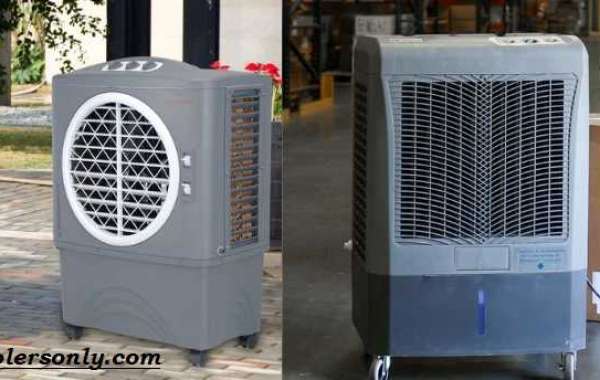Swamp Cooler Installation: Stay Cool and Comfortable with an Efficient Cooling System
When the scorching heat of summer arrives, finding effective ways to keep your home cool becomes a top priority. While traditional air conditioning systems are popular, they can be expensive to install and maintain. If you're looking for an affordable and energy-efficient cooling solution, consider installing a swamp cooler. In this guide, we will explore the benefits of swamp coolers and provide you with a step-by-step overview of the installation process.
What is a Swamp Cooler?
A swamp cooler, also known as an evaporative cooler, is a cooling system that works on the principle of evaporation. Unlike air conditioners that use refrigerants to cool the air, swamp coolers use the natural process of evaporation to lower the temperature. These coolers pull warm outside air through water-soaked pads, causing the water to evaporate and cool the air. The cooled air is then circulated throughout the house, providing a refreshing and comfortable environment.
Benefits of Swamp Coolers:
Energy Efficiency: Swamp coolers are known for their energy efficiency. They consume significantly less electricity compared to traditional air conditioners, making them a cost-effective choice for cooling your home.
Environmentally Friendly: Since swamp coolers use the evaporation process instead of refrigerants, they have a minimal impact on the environment. They do not release harmful greenhouse gases, making them a greener cooling option.
Increased Humidity: In dry climates, where humidity levels are low, swamp coolers can add moisture to the air, providing relief from dry skin, allergies, and respiratory issues.
Cost-Effective: Swamp coolers are generally more affordable to purchase and install than traditional air conditioning systems. Additionally, they have lower maintenance costs and use less electricity, resulting in long-term savings.
Now let's delve into the swamp cooler installation process:
Step 1: Determine the Installation Location
Choose an appropriate location for your swamp cooler. Ideally, it should be installed on the roof or an elevated platform to ensure proper airflow and efficient cooling. Make sure the area is well-ventilated and has access to a water supply and electrical connections.
Step 2: Prepare the Mounting Surface
Ensure the mounting surface is sturdy and can support the weight of the swamp cooler. If you're installing it on the roof, check for any leaks or damage that might require repair before proceeding.
Step 3: Install the Ductwork
Connect the ductwork from the swamp cooler to the designated vents in your home. This will distribute the cooled air evenly throughout the rooms. Ensure the ducts are properly sealed to prevent air leakage.
Step 4: Connect the Water Supply
Swamp coolers require a constant supply of water for the evaporation process. Connect a water line to the cooler and make sure it is secure and leak-free. You may need to hire a professional plumber for this step if you're not familiar with plumbing installations.
Step 5: Electrical Connections
Swamp coolers require electricity to operate the fan and water pump. Connect the cooler to a dedicated electrical circuit, following the manufacturer's instructions and any local electrical codes. It's always recommended to hire a licensed electrician to handle the electrical connections for safety purposes.
Step 6: Test and Adjust
Once the installation is complete, test the swamp cooler to ensure everything is functioning correctly. Check the airflow, water supply, and thermostat settings. Make any necessary adjustments to achieve the desired cooling effect.
Maintenance Tips for Swamp Coolers:
To keep your swamp cooler running efficiently, follow these maintenance tips:
Clean or replace the cooling pads regularly to prevent dirt and mineral buildup.
Check and clean the water reservoir to avoid algae growth and foul odors.
Inspect the ductwork for any leaks or damage and repair as needed.
Shut off the water supply and drain the cooler before the winter season to prevent freezing and damage.
Schedule an annual professional inspection to ensure your swamp cooler is in optimal condition.
Conclusion:
Swamp coolers offer a cost-effective and energy-efficient cooling solution for your home, particularly in dry climates. By following the installation process outlined above and maintaining your swamp cooler properly, you can enjoy a cool and comfortable living environment while keeping your energy costs low. Stay cool this summer with a swamp cooler and beat the heat with this eco-friendly and budget-friendly cooling option. Read More









